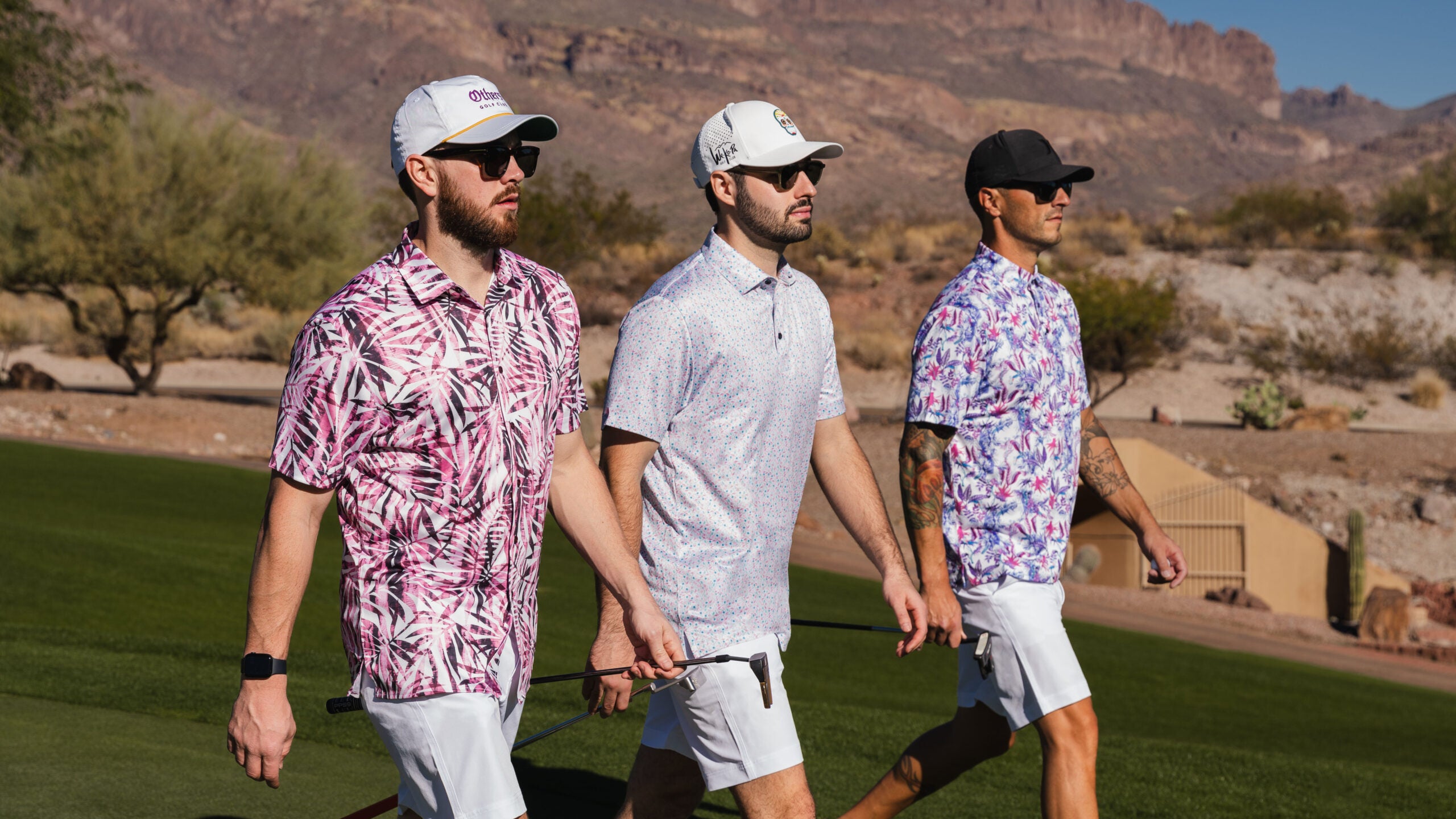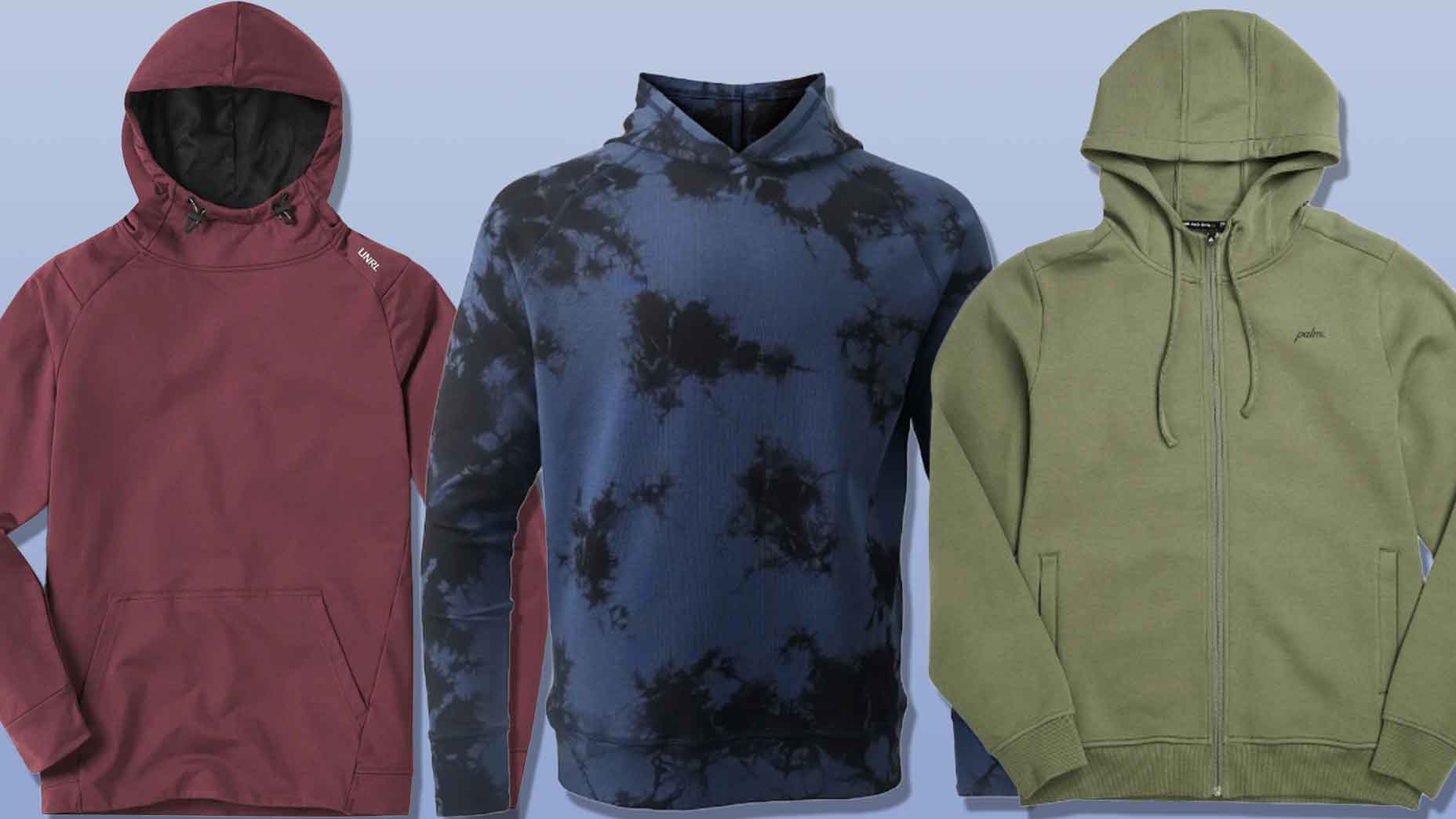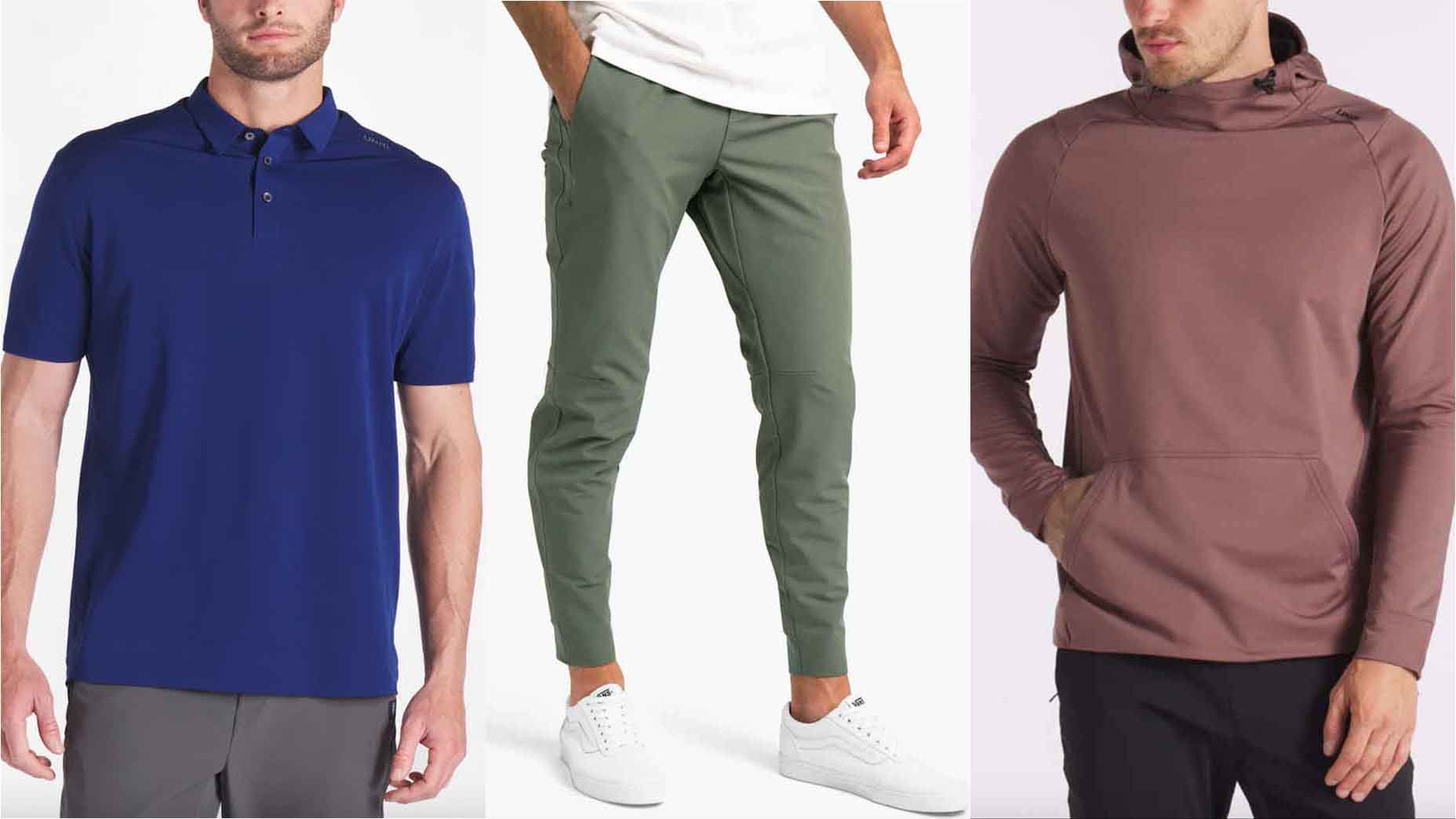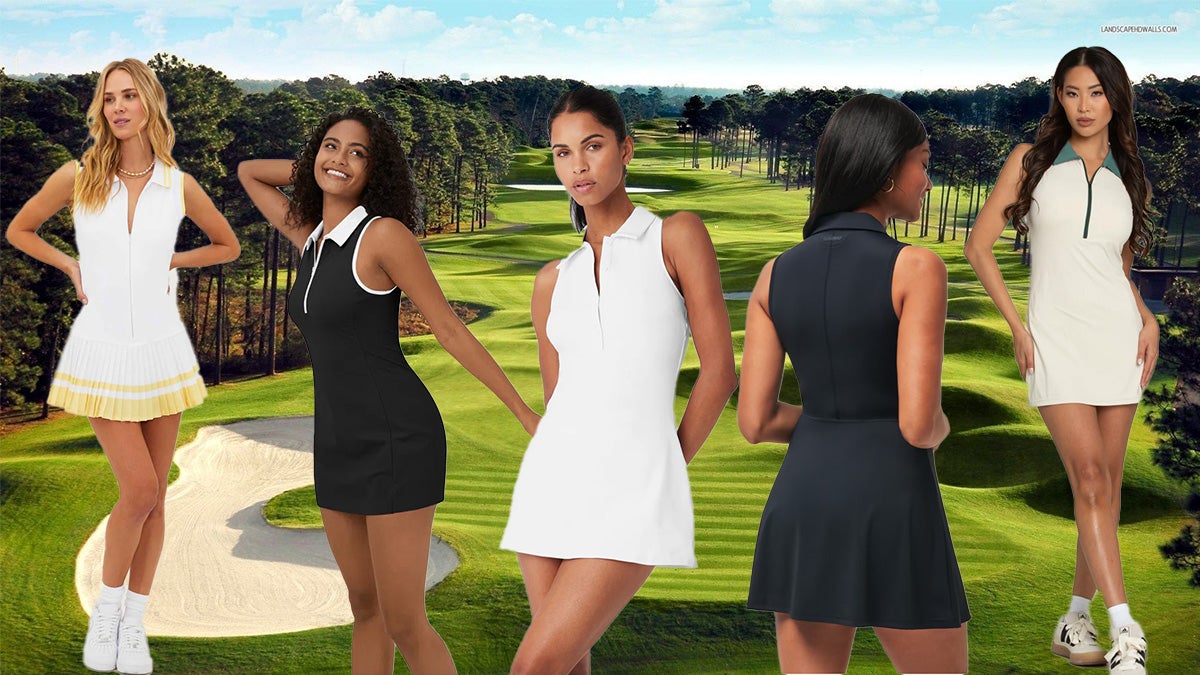Some guys just have it, that hard to define but unmistakable cool factor that draws people to them. Arnold Palmer had it. Fred Couples has it. And so, too, does John Ashworth. At 58, Ashworth is ruggedly handsome and projects an appealing, surfer-dude mellowness, sprinkled with the karmic wisdom of a yogi. In fact, the surf culture has had a deep impact on this Southern California native, and it shows in the relaxed vibe of his new passion project, Linksoul. Having reinvented golf clothes in the late 1980s with his eponymous company, which featured higher-quality fabrics and more stylish cuts, Ashworth founded Linksoul in 2009 as an act of rebellion. As big sporting companies have made a bigger play in the golf sector and insisted on rebranding their endorsers as quote-unquote athletes, the clothes they produce have changed, too, with a greater emphasis on space-age materials, neon colors and “performance” instead of comfort.
At Linksoul, cotton is still king, and Ashworth has found the softest, comfiest strains on the market. He also rejects the idea of what he calls “the golf uniform,” insisting that his clothes be stylish enough to wear to work, then the course, then maybe a night out.
We caught up with Ashworth at the Linksoul Lab in Oceanside, Calif. In a large, repurposed industrial building, you can find the company headquarters and an in-demand event space favored by local artists. There is also a swank retail store designed to be experiential, not transactional: Dogs lounge at the feet of the salespeople, gorgeous custom putters beg to be waggled, and a well-stocked bar beckons. Overseeing it all is golf’s king of cool, who reflected on a golfing life and how he has changed the way we dress. For a director’s cut of the interview, check out the podcast below.
How did you fall in the love with the game?
When I was eight years old, my mom got on this kick that me and my five siblings were going to go to Sunday school. So I must’ve complained so much that she got my dad involved. He was a schoolteacher; he had his Sundays lined up. He’d play golf every Sunday. My mom came back to me and said, “Okay, you either go to Sunday school or you go caddie for your dad with his buddies.” That was the deal they struck. We’d get up before dawn, go to a donut shop, then meet his regular group at this public course — San Luis Rey Downs in Bonsall — which is not even there anymore, which is really sad. But I just loved being outside, and all the things around golf. The sound of spikes on the concrete…what an amazing sound. The dappled sunlight coming through the trees, the dew on the greens, just all those things that are really special. After that, I started watching it on TV and fell in love with Arnold Palmer.
You got good enough to compete in the U.S. Junior and play for Arizona. At what point did you start paying attention to the clothes?
When I was in high school I didn’t tell people I played golf, because you were a nerd or a geek if you were a golfer. A lot of that was because of what guys were wearing. It was super-loud polyester bell-bottom pants with super-loud shirts. It’s stuff that you wouldn’t be caught dead wearing in the real world, right? At Arizona, our golf uniforms were just awful. They were bulletproof polyester pants, just the worst of the worst. Of course, I was affected by that.
After college you knocked around the real world for a while, then, in 1984, wound up caddying on the PGA Tour for your boyhood friend Mark Wiebe. How did that happen?
I go, “You get your card and I’ll caddie for you for a year. I don’t really wanna be a lifer caddie, because I wanna do other stuff. I don’t know what it is, but I wanna figure something out.” So off we went. I was getting, like, $250 a week plus 5 percent of whatever he won. He had a pretty challenging rookie year, to say the least. I slept in my car a few times. It was like being in a circus. You’d roll into town, you’d kind of feel special, and everybody was fired up, and there were parties going on and stuff. But it gave me a chance to see what everybody was wearing and see the vibe in different places in the country. It was really an eye-opener. I think I developed a lot of ideas around where I could see the look going.
How do you go from there to starting your own company?
When I caddied for Mark, I met his main sponsor, a guy named Gerry Montiel. We got to be friends. Gerry was a very entrepreneurial type of guy, and he decided that he was gonna open a retail store in Denver, focusing on golf, tennis, cycling, skiing — upper-end stuff. He asked me to be the buyer and the manager of the golf/tennis department. I still had no idea I was gonna start Ashworth at this time, but I got to kind of take it all in, right? Unfortunately for Gerry, the concept didn’t work and he had to close the store. After that he was looking for another business to start. I basically said, “Golf clothing is ridiculously bad. I think we could develop something that guys like us wanna wear and have it be a little bit more natural, a little bit more on-course-off-course.” Being the entrepreneur he was, he saw the opening too and said, “Yeah, let’s do it.” So on we went, in late 1986.
Okay, you had the vision, and now you have an investor. But still, how do you bring it to life?
I didn’t know my ass from third base, basically. But for some reason, I instinctively felt like I either had to move to New York or L.A., because that’s where the garment districts were. I moved to L.A. and went to the school of hard knocks. I had an office in downtown — 7th and Main. It was super gnarly and rugged. But the fashion mart was there. You could go and look at fabrics and trims and buttons and zippers — all that stuff. I’d go and just sort through it and look for ideas. There were contractors in the area, so I just kind of pieced it together.
And you still had your Tour connections. How important was that in getting started?
That was huge—probably the biggest thing. I didn’t really know Fred [Couples] in college, but we played at the same time. When we decided to start this company, I pretty much said, “Hey, we need a couple of guys we can hang our hats on who really represent what we wanna do.” There was one clear choice: Fred. I had seen him in college tournaments, and thought the guy seemed so cool. He just sauntered down the fairway, shirt untucked, and it’s like, I don’t know what it is, but that guy’s got plenty of it. I also really like John Cook. He was just super chill. Still is. I approached both of them, told them what I was doing, and said, “Hey, I’d love to have you guys be a part of it.” They were in. I was like, “Wow. Okay, this is cool.”
Such a simpler time. Imagine trying to walk up to Jordan Spieth or someone like that now. There would be so many layers of bureaucracy you’d have to go through. So they started wearing the clothes almost right away?
Yeah, they did. We didn’t have any money, but we gave them a little stake in the company. Over the years they did really well with that.
Obviously, the timing was perfect because Freddie was on his ascent.
Yeah, he started going Richter, for sure. Then he won the Masters in “92, and that’s when we really caught fire. As a kid, Ernie Els loved Freddie, so Ernie approached us when he was 20 and said, “I wanna wear your stuff.” That’s how it went.
Part of the positioning was not only to try to make clothing that had a little bit more cool factor, but to present a visual vocabulary where people would be like, “Wow, that’s really different.” We used to do a lot of black-and-white photography. We would never do photo shoots on a golf course. It was always an industrial landscape or way off the grid in a super-creative way. It would just kind of stand out, you know?
It must be hard to leave a company that has your name on it.
It’s kind of a long story.
Give me the medium version.
We hired a guy to come in and help run it, and he and I were not getting along. It became painful.
Because he was an actual business-person and you were an idealist?
I guess you could broad-stroke it that way, but he was just too much of…
You don’t have to say it. But there were other reasons you left, right?
All right, so Ashworth was cranking along. I went over to Scotland in the early “90s, and it just blew my mind. Just the culture of it. How many regular people in the village played golf and talked about it. You see them walking down the street with their clubs. “Oh, hey, Joe. Did you play in the medal?” Fast forward a few years later, I’m playing Gullane, and the caddie goes, “Hey, John, you see that big piece of land over there next to Muirfield? That’s been zoned [for golf].” There used to be two golf courses there that disappeared. Back in the 1880s, there was a course called Archerfield and there was a course called Fidra, a nine-hole course. So the hair on the back of my head just stood up. I had goosebumps all over me. I got all fired up. I went back to my board of directors and said, “Hey, look, I know this is not typical, but I feel like if we could put our flag down in the soil next to the home of the Honourable Company in a cool way to bring back these old, lost links courses, as a golf lifestyle brand it just doesn’t get any better than that.” We were already a global company. I didn’t see any downside to this.
Lemme guess: The board didn’t share your vision?
Oh, they thought I had three heads. They thought I was out of my tree. I probably was, but I was saying, “Hey, I’ll find a way to finance this somewhere else, but I think it should be part of the company.” Anyway, we didn’t really see eye-to-eye on it. I ended up leaving Ashworth to go do that. Long story short, I ended up getting carved out of [the course] thing, too. It didn’t end well, but the cool thing is, it happened. It’s all there. The Renaissance Course at Archerfield, that’s the site.
While you were away, the industry changed drastically. You sort of singlehandedly killed off polyester for about 15 years…
Tried to. That was the goal. Then it came back. My take on that is, back in the Ashworth days, there was no Nike, there was no Adidas. It was more of a mom-and-pop cottage industry. I think a lot of those people saw how successful we were and said, “Hey, I want a piece of that.” Then Nike got in when Tiger came out. I actually thought we had a halfway shot at Tiger because he used to wear Ashworth as a junior. Obviously, we weren’t even in the ballpark. But the way I look at it is, those athletic companies, they make soccer clothes and football uniforms and stuff like that. They use synthetic fibers for that because [the clothes] take a beating. Those are the factories they work in. I think when they got into the golf game they just said, Well, we’ve got our factories. We can make synthetic yarns and fabrics. We have the right needle for that. We have the right sewing machines. We’ll just take a polo and use that fabric.
They sort of invented the idea that golfers are jocks and their clothes had to perform.
And synthetics came back with a vengeance. It came right back to polyester everything, with white belts all over again. It was like déjà vu, right?
Were you personally offended?
It’s just not my cup of tea. I just think there are people who like more natural stuff. I wanna make clothing that can be transitional. Even if you go to work and you kind of don’t even know that you might be able to sneak out for nine holes. You don’t need to look like a golfer. I don’t think there should be a golf uniform, like, “Oh, I’m gonna put on my Batman suit and go.”
You’re something of a superhero around Oceanside, because Linksoul is so community-minded. The ultimate example is your support of Goat Hill, the little muni here that you’ve helped bring back to life. That’s a whole different Q & A, but it feels like Linksoul has an authenticity that is rare in this corporate world we live in.
I guess it is, but we just make it up as we go along. There’s no road map. There’s no, “Oh, you gotta turn right here.” No, I don’t know if I have to turn right or left. So I go right or left and see what happens.
That’s a worldview you just described. That’s a lifestyle.
I know. It’s been great. I’ve been very, very lucky.






